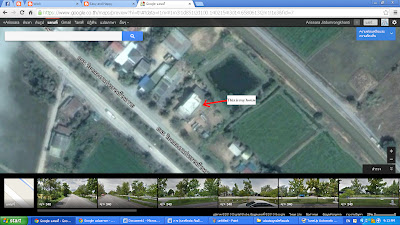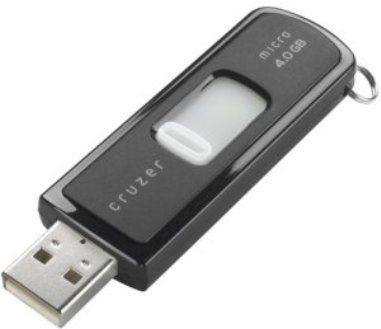A laptop is a portable personal computer with a clams hell form factor, suitable for mobile use. A laptop has most of the same components as a desktop computer, including a display, a keyboard, a pointing device such as a touch pad (also known as a trackpad) and/or a pointing stick, and speakers into a single unit. A laptop is powered by mains electricity via an AC adapter, and can be used away from an outlet using a rechargeable battery. Laptops are also sometimes called notebook computers or notebooks. Other terms, such asultrabooks or net books, refer to specific types of laptop / notebook. Most of the modern day laptop computers also have a webcam and a mic (microphone) pre-installed.
Portable computers, originally monochrome CRT-based and developed into the modern laptops, were originally considered to be a small niche market, mostly for specialized field applications such as the military, accountants and sales representatives. As portable computers became smaller, lighter, cheaper, and more powerful and as screens became larger and of better quality, laptops became very widely used for a variety of purposes.
History
As the personal computer (PC) became feasible in the 1970s, the idea of a portable personal computer followed. A "personal, portable information manipulator" was imagined by Alan Kayat Xerox PARC in 1968, and described in his 1972 paper as the "Dynabook".
The IBM Special Computer APL Machine Portable (SCAMP), was demonstrated in 1973. This prototype was based on the IBM PALM processor (Put All Logic in Microcode or 128 bit).
The IBM 5100, the first commercially available portable computer, appeared in September 1975, and was based on the SCAMP prototype.
As 8-bit CPU machines became widely accepted, the number of portables increased rapidly. The Osborne 1, released in 1981, used the Zilog Z80 and weighed 23.6 pounds (10.7 kg). It had no battery, a 5 in (13 cm) CRT screen, and dual 5.25 in (13.3 cm) single-density floppy drives. In the same year the first laptop-sized portable computer, the Epson HX-20, was announced.The Epson had a LCD screen, a rechargeable battery, and a calculator-size printer in a 1.6 kg (3.5 lb) chassis. Both Tandy/RadioShack and HP also produced portable computers of varying designs during this period.
The first laptops using the flip form factor appeared in the early 1980s. The Dulmont Magnum was released in Australia in 1981–82, but was not marketed internationally until 1984–85. The US$8,150 (US$19,390 today) GRiD Compass 1100, released in 1982, was used at NASA and by the military among others. The Gavilan SC, released in 1983, was the first computer described as a "laptop" by its manufacturer.From 1983 onward, several new input techniques were developed and included in laptops, including the touchpad (Gavilan SC, 1983), the pointing stick (IBM ThinkPad 700, 1992) and handwriting recognition (Linus Write-Top, 1987). Some CPUs, such as the 1990 Intel i386SL, were designed to use minimum power to increase battery life of portable computers, and were supported by dynamic power management features such as Intel SpeedStep and AMD PowerNow! in some designs.
Displays reached VGA resolution by 1983 (Compaq SLT/286), and colour screens started becoming a common upgrade in 1991 with increases in resolution and screen size occurring frequently until the introduction of 17"-screen laptops in 2003. Hard drives started to be used in portables, encouraged by the introduction of 3.5" drives in the late 1980s, and became common in laptops starting with the introduction of 2.5" and smaller drives around 1990; capacities have typically lagged behind physically larger desktop drives. Optical storage, read-only CD-ROM followed by writeable CD and later read-only or writeable DVD and Blu-ray, became common in laptops early in the 2000s
Classification
he term "laptop" can refer to a number of classes of small portable computers
- Full-size Laptop: A laptop large enough to accommodate a "full-size" keyboard (a keyboard with the minimum QWERTY key layout, which is at least 13.5 keys across that are on ¾ (0.750) inch centers, plus some room on both ends for the case). The measurement of at least 11 inches across has been suggested as the threshold for this class.[12] The first laptops were the size of a standard U.S. "A size" notebook sheet of paper (8.5 × 11 inches)[citation needed], but later "A4-size" laptops were introduced, which were the width of a standard ISO 216 A4 sheet of paper (297 mm, or about 11.7 inches), and added a vertical column of keys to the right and wider screens. It can also be laid sideways when not in use.
- Netbook: A smaller, lighter, and therefore more portable laptop with less computing power than traditional laptops. It is usually cheaper than a full-size laptop, and has fewer features. The smaller keyboards of a netbook can be more difficult to operate. There is no definitive demarcation between netbooks and inexpensive small laptops, some 11.6" models are marketed as netbooks. Since netbook laptops are quite small in size and designed to be light and inexpensive they typically do not come with an internal optical drive. The Asus Eee PC launched this product class, while the term was coined later by Intel. Most netbooks feature cheaper, slower, but more energy efficient CPUs, as compared to traditional laptops, such as the Intel Atom CPU.
- Tablet PC: These have touch screens. There are "convertible tablets" with a full keyboard where the screen rotates to be used atop the keyboard, a "hybrid tablet" where the keyboard can be detached from the screen, and "slate" form-factor machines which are usually touch-screen only (although a few older models feature very small keyboards along the sides of the screen.)
- Ultra-mobile PC: An ultra-mobile PC (ultra-mobile personal computer or UMPC) is a small form factor version of a pen computer, a class of laptop whose specifications were launched by Microsoft and Intel in spring 2006. Sony had already made a first attempt in this direction in 2004 with its Vaio U series, which was only sold in Asia. UMPCs are smaller than subnotebooks, have a TFT display measuring (diagonally) about 12.7 to 17.8 cm, and are operated like tablet PCs using a touchscreen or a stylus. This term is commonly (if inaccurately) used for small notebooks and/or netbooks.
- Handheld PC: A Handheld PC, or H/PC for short, is a term for a computer built around a form factor which is smaller than any standard laptop computer. It is sometimes referred to as a Palmtop. The first handheld device compatible with desktop IBM personal computers of the time was the Atari Portfolio of 1989. Other early models were the Poqet PC of 1989 and the Hewlett Packard HP 95LX of 1991. Other DOS compatible hand-held computers also existed.
- Rugged: Engineered to operate in tough conditions (mechanical shocks, extreme temperatures, wet and dusty environments, etc.)
- Ultrabook: A very thin version of a laptop usually less than an inch thick. Most versions of Ultrabooks contain SSD, or Solid-State Drives, instead of the common Laptop Hard Disk Drives. Although this term (like Netbook) was coined and popularized by Intel, one of the most prominent examples is Apple's Macbook Air.














